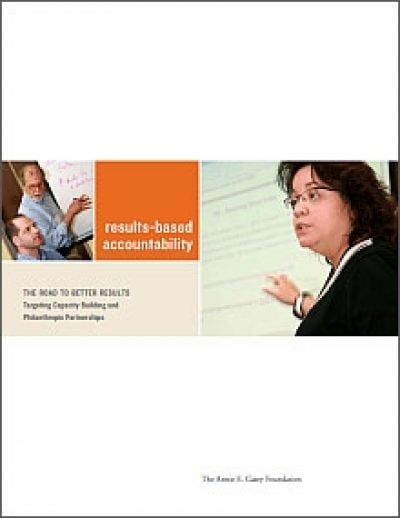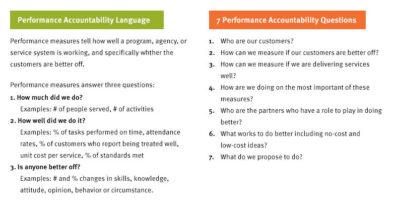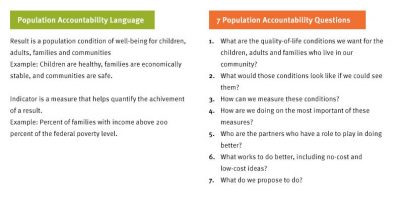Change vs. Implementation
Minimum training leads to a mechanical implementation of RBA, not a true culture shift.

Going from counting how many people you have served to how many lives you have improved takes a special kind of reporting strategy. The Annie E. Casey Foundation uses the Results-Based Accountability (RBA) framework. RBA shifts the focus from the means (how we did it) to the ends (what difference did it make). This RBA case study, written for other philanthropic funders, outlines how the Foundation’s strategic partnerships and investments in Connecticut contributed to building a state-wide results culture targeting improvements for families and children. Connecticut has become a national leader in the use of results accountability. Readers will find a case history that includes RBA definitions, timelines, leadership spotlights, lessons learned, practical tips and proven advice for creating a results-driven culture.

It is a way to create a new type of culture that is geared toward quality performance and continuous improvement.

RBA is spreading a common language of performance measure over population measure on the program and community level in the public, nonprofit and philanthropic sectors.
We hope you'll find value in this report. We’d love to get a little information from you, which we'll use to notify you about relevant new resources.